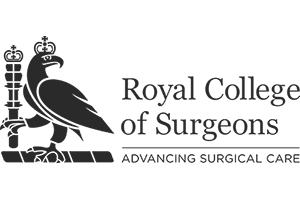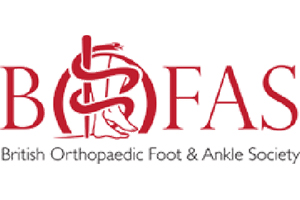The information outlined below on common conditions and treatments of the foot and ankle is provided as a guide only and it is not intended to be comprehensive. Discussion with Mr Hepple is important to answer any questions that you may have.
For information about any additional conditions not featured within the site, please contact us for more information.
Cheilectomy is an operation to remove a bony lump on the top of the main joint of the big toe. This is almost always caused by arthritis of the great toe (sometimes known as “hallux rigidus”)
This operation is done either because the bony lump is pressing painfully on your shoes, or as a treatment for early arthritis of the big toe, when the joint is not yet badly affected. Some people have both reasons for surgery. If the lump is pressing on your shoes, you will probably have tried different shoes before coming to see the surgeon, and there is usually no other option than surgery. However, if arthritis is the main problem, surgery would only be advised if other treatments, such as painkilling and anti-inflammatory medicines, modifications to your shoes and injections had not helped.
They are done for two main reasons:
(1) arthritis of the joint, because of a previous injury that has damaged the joint, a generalised condition such as osteoarthritis or rheumatoid arthritis, or because the joint is just wearing out for some other reason
(2) severe deformity of the rear part of the foot, such as a flat foot, high-arched or “cavus” foot, a club foot or other deformity, in which the ankle joint is also deformed, unstable or damaged.
It is now possible to treat some arthritic ankle joints by replacing the joint, in the same way as arthritic hips and knees can be replaced.
Read More About the Diagnosis and Procedure involved in an Ankle Fusions here.
Arthroscopy of the ankle is usually done after an injury which is failing to settle and where there is evidence of damage to the ligaments, lining or surfaces of the ankle. It is also a good way to remove loose fragments from the inside of the ankle. Sometimes it is done to assess the severity or extent of arthritis, or to treat arthritis by fusing the joint. If it is done for an injury, a scan of the ankle may be done first to alert the surgeon to what may be found inside the joint.
Read More About the Diagnosis and Procedure involved in an Ankle Arthroscopy here.
The commonest reason for fusing the great toe is arthritis of the big toe joint. This may be isolated arthritis of the big toe (“hallux rigidus”) or part of a generalised arthritis of the foot (usually rheumatoid arthritis). It would only be done if the arthritis has severely damaged the joint. If hallux rigidus is at an early stage, another operation, called a cheilectomy, is usually advised.
Read More About the Diagnosis and Procedure involved in a Fusion of the great toe here.
Modified “Oxford” procedure
Modified “Stainsby” procedure
Toe fusion
Tendon transfer
Read More About the Diagnosis and Procedure involved in Lesser Toe Surgery here.
A Morton`s neuroma causes pain in the ball of your foot and possibly your toes. It can sometimes be treated with simple measures such as comfortable shoes, weight loss, insoles and simple pain tablets. If these measures do not work, an injection of local anaesthetic and corticosteroid will be tried and if this is not sufficient to control your symptoms, the trapped nerve can be surgically removed. Occasionally people have morton`s neuromas in both feet.
Read More About the Diagnosis and Procedure involved in Morton`s Neuroma Excision here.
Why would it be done?
Triple fusions are done for two main reasons:
(1) Arthritis of the joints, because of a previous injury that has damaged the joints, a generalised condition such as osteoarthritis or rheumatoid arthritis, or because the joint is just wearing out for some other reason
(2) Severe deformity of the foot, such as a flat foot, high-arched or “cavus” foot, a club foot or other deformity. Sometimes these can be corrected by breaking and reshaping the bones, but in other cases it is best to stiffen the joints in the corrected position, particularly if the joints are already stiff or the foot is weak.
Read More About the Diagnosis and Procedure involved in a Triple fusion here.
They are frequently given for painful joints, trapped nerves and around ligaments. In the foot, these injections are often given to help in the diagnosis as well to control the symptoms. Some of these injections can be given in an outpatient clinic but others need to be given in an operating theatre using X-rays to guide the needle.
Read More About the Diagnosis and Procedure involved in a Corticosteroid Injection here.
The commonest reason for fusing the great toe is arthritis of the big toe joint. This may be isolated arthritis of the big toe (“hallux rigidus”) or part of a generalised arthritis of the foot (usually rheumatoid arthritis). It would only be done if the arthritis has severely damaged the joint. If hallux rigidus is at an early stage, another operation, called a cheilectomy, is usually advised.
Read More About the Diagnosis and Procedure involved in a Metatarsal Osteotomy here.
Discussion with Mr Hepple is important to answer any questions that you may have. For information about any additional conditions not featured within the site, please contact us for more information.




